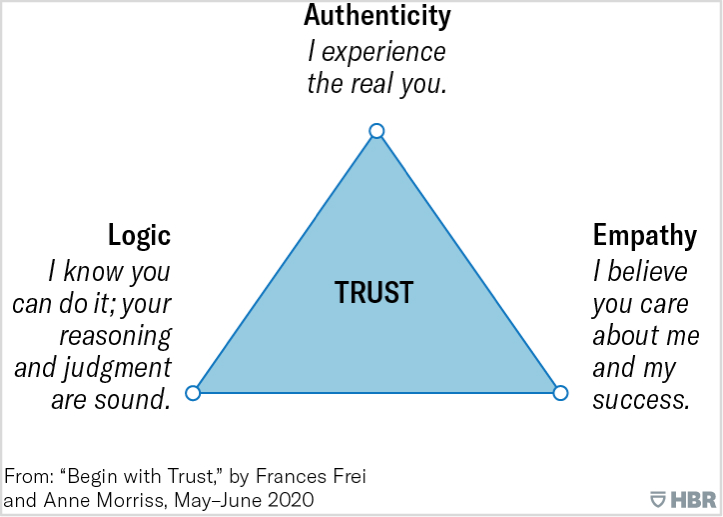When you are moving at lightning speed, it is inevitable that things will break.
In the periods that you are meeting and exceeding your growth targets, the experience of moving fast and breaking things will feel like it’s taking you places, as long as you are also taking your customers, stakeholders and team members with you. You are thriving.
But when growth is slowing or stagnating, the sensation of moving fast and breaking things can feel more like surviving, with investors continually on your back and a runway that is edging ever closer. Your logical, rational brain knows that you need to be moving fast and fixing things, but neither you nor your team can get your arms around the accumulating number of growth problems.
The reason? More often than not, you are trying to fix the wrong problems.
In the desperate rush to fix, our minds are overpowered by the ‘law of least effort’.1 Our brains go into our automatic, emotional, fast-thinking mode and forget to switch on our logical, rational slow-thinking mode.2 We look for proof we are correct – instead of asking questions and listening to learn something new.
I believe this to be one of the biggest reasons for unsolved growth problems.
We jump first towards what we know. The things that sound, look and feel more familiar.
- The task
- The process
- The product
In my experience though, 9 out of 10 growth problems are actually human problems underneath, the less tangible ones, even though at first sight it might appear to be a technical or process problem.
- Human capability
- Human conflict
- Human ambiguity
As Eric Ries says in his book The Lean Startup3, at the root of every seemingly technical problem is a human problem.
When you miss the REAL problem that lies beneath, your attempted fixes create waste and avoidable distraction. They drain energy by the bucketload. The cumulative impact of these unidentified, unsolved human problems means that your startup will not reach its full potential. Or worse, it will run out of money, moving fast but breaking faster.
How do you identify the human barriers to growth?
You can’t fix something until you first understand it. You have to be disciplined in intentionally slowing your thinking down from fast-brain mode, into slow-brain mode.
To make it easier, I highly recommend you and your team practice using simple tools, like The 5 Whys, and provide these to all your people. This will help you bring this simple discipline into everyday life, which is essential in the chaotic world of startups.
In this 3 minute recording I share an example of how the 5 Whys tool quickly gets to the nub of a real human barrier. Example – using The 5 Whys
I liken this process to peeling the layers off an onion. The deeper you go, the more eye-watering it can become.
You will need to be prepared for the fact that you are going to turn unpleasant facts about your organization, especially at the beginning. It is going to call for investments in prevention that come at the expense of time and money that could be invested in new products or features. Eric Ries, The Lean Start Up.3
With practice, you will dramatically increase the chances of identifying these human barriers. You stop creating distraction. You stop wasting time, resource and energy.
How do you fix things, fast?
Now you know what the human barrier is, you can actually go about fixing it.
But how do you do this FAST?
The secret ingredient to fixing fast is TRUST.
Fixes happen faster when there is trust. 10x when it is a human fix that is needed.
When you and your top team are trusted, your customers, stakeholders and team members will work with you, they will be more forgiving of your mistakes and they will get behind you to make things better.
Here are three steps to (re)build trust so you can fix, fast.
1. Focus your trust efforts
Begin with the person or group with the highest stake in your problem. Who is paying the price? They are the ones who will benefit most when you solve it. You need to build their trust and confidence that you are going to fix this.
You then need to build the trust of the person or group who is making the fix happen. What support, physical and emotional, do they need to believe that you are fully behind them and have their backs?
2. Show authenticity, empathy and logic
The trust model from Frei and Morriss4 is the best I have come across, not only because it is research-based, but also due to its simplicity. You, your top team and all your team members can apply it in the real world.
When you show up with authenticity, empathy and logic, trust will come. We are naturally stronger in one than the others. Use your team to help balance you out so you can strengthen all 3 trust muscles.

3. Face into fixing the human barriers
When you are making the move from do-er to leader, fixing human barriers can feel overwhelming. Often you and your top team are out of your comfort zones. People are looking to you for direction and you are not sure where to point them.
By this stage you likely have a Head of HR in place. The reality is they’ll be busy trying to keep the wheels on the day-to day people operation, getting the basic processes and tools in place. They either don’t have the time or the capability (yet) to help you figure out what really needs to be done, in what sequence.
Reading books and listening to podcasts will give you ideas. The only way to really get comfortable with this stuff is to start doing it. Experimenting and trying new things. Some will work and some won’t, but you will learn 100 times faster in the moments when you get it wrong.
These are the moments to lean on your network, on the formal and informal advisers, mentors and friends who have been there and got the t-shirt (and the bruises).
Try it out. Practice. Repeat.
Before you know it, you’ll be Moving Fast and Fixing things every day of the week.
References
1 The Principle of Least Effort
2 Thinking, Fast and Slow: Daniel Kahneman

